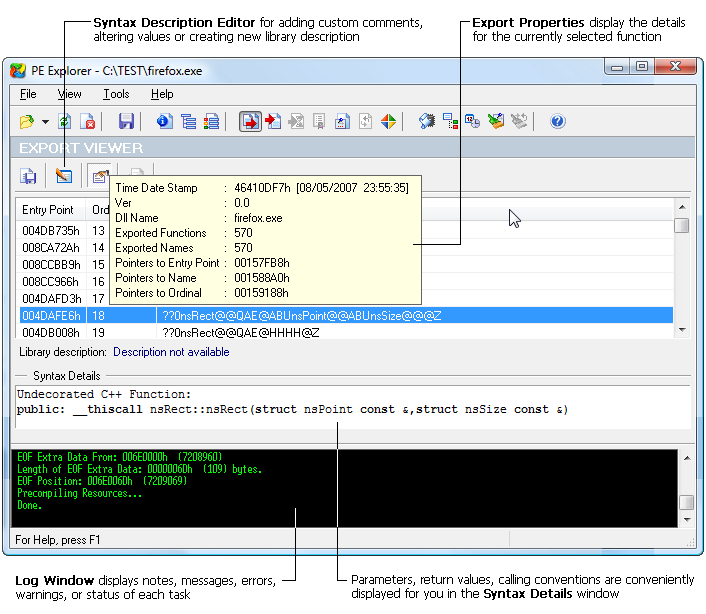

- Pe explorer remove dll dependency drivers#
- Pe explorer remove dll dependency driver#
- Pe explorer remove dll dependency code#
Since DLLs and drivers require a base relocation table, removing any of those relocations can result in corrupted files, and it is very likely that the newly saved file will appear to be invalid.
Pe explorer remove dll dependency driver#
The Remove Relocations tool determines whether a file is a DLL or driver and warns you in each case.

If you take a look at Windows Notepad.exe there is no relocation table within. NET, the linker omits relocations for EXEs when doing a release build. We highly recommend that you do not strip relocations from all EXEs you come across, because while this may save space, it may cause some executables not to work properly. This is because EXEs are the first thing loaded into an address space, and therefore are guaranteed to load at the preferred load address. As a rule, there's no need for an EXE to have a base relocation table. This tool strips the table of the base relocations (Fix-Up Table) from the EXE files and saves space, making them smaller. Offers easy-to-use tools such as a Visual Resource Editor, powerful Win32 Disassembler, DLL Export Viewer, UPX Unpacker and Dependency Scanner. The entries in the Fix-Up Table are called base relocations since their use depends on the base address of the loaded image. PE Explorer makes it easy to view, analyze and reconstruct win32 executable files (EXE, DLL, SYS, ActiveX). Other than the built-in dependency walker, CFF Explorer also comes with a. Each block represents the fixups for a 4K page. Similarly to programs that are created and. It offers a thorough look at PE file structure and all of the resources in the file. The fixup table is broken into blocks of fixups. PE Explorer is the most feature-packed tool for inspecting the inner workings of PE files (EXE, DLL, ActiveX controls, and several other Windows executable formats). The Total Fix-Up Data Size in the Optional Header is the number of bytes in the fixup table. The Fix-Up Table contains entries for all fixups in the image. Three main types of debug information are CodeView, COFF, and FPO. These structures hold information about the type, size, and location of the various types of debug information stored in the file. An EXE can have multiple forms of debug information, an array of data structures known as the debug directory indicates what's available. The operating system does not require this to run the executable, but it is useful for development tools.

When an executable is built with debug information, it is customary to include details about the format of the information and where it is. This displays the debug information contained in the file. Additionally, it compares the Real Checksum to the value reported by the header (Link Checksum), since the file checksum field of the optional header can be modified without invalidating the Authenticode signature. Then PE Explorer compares the second digest (Real File Hash) to the original (Signed File Hash).
Pe explorer remove dll dependency code#
Then PE Explorer decrypts the message digest with the public key, and the same hash algorithm that was used to create the message digest is run on the code again, to create a second message digest (Real File Hash). PE Explorer examines the certificate and obtain the developer's public key from the certificate.


 0 kommentar(er)
0 kommentar(er)
